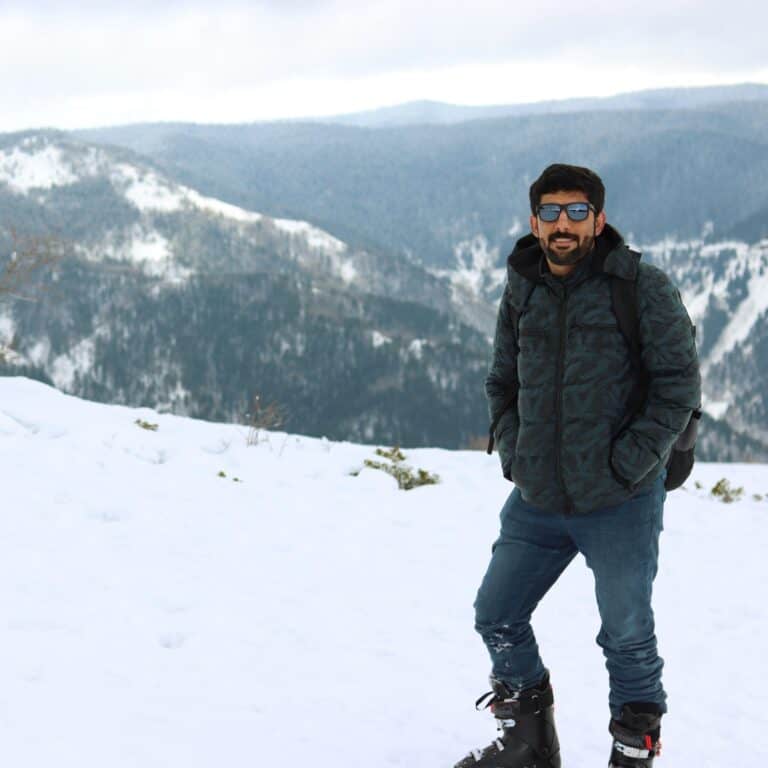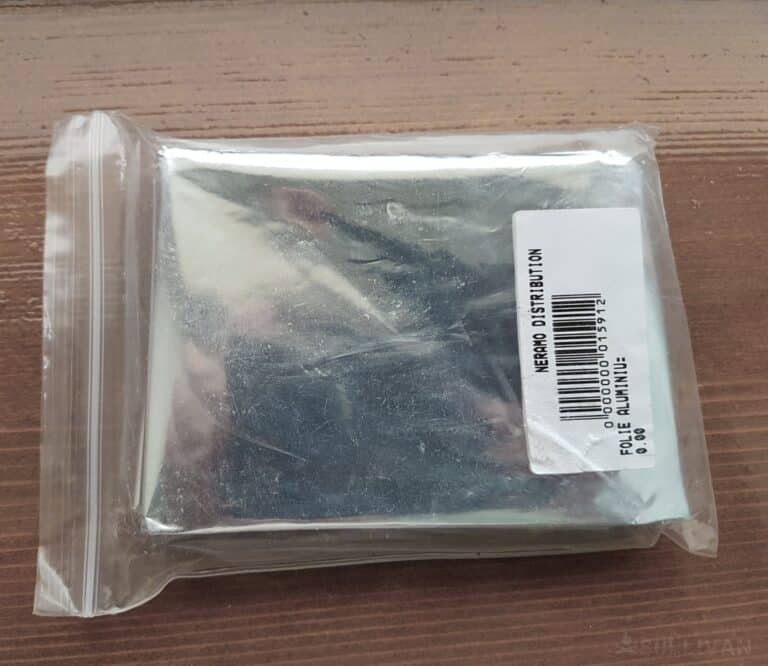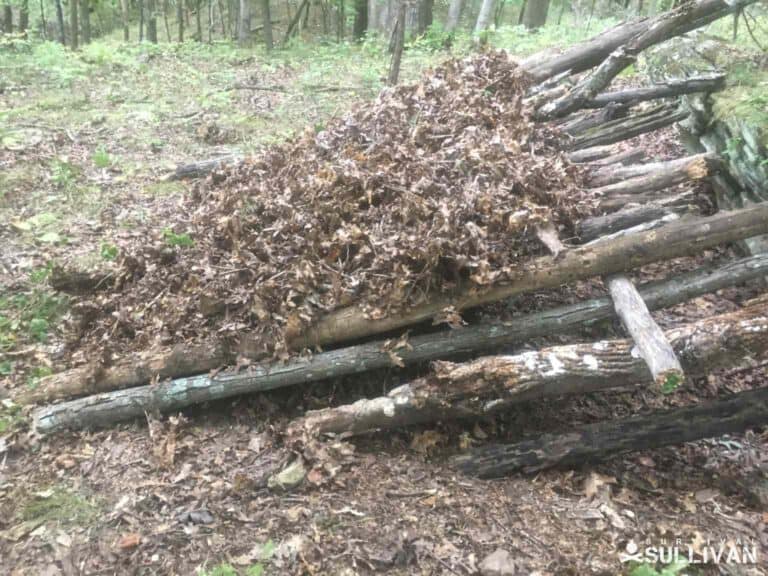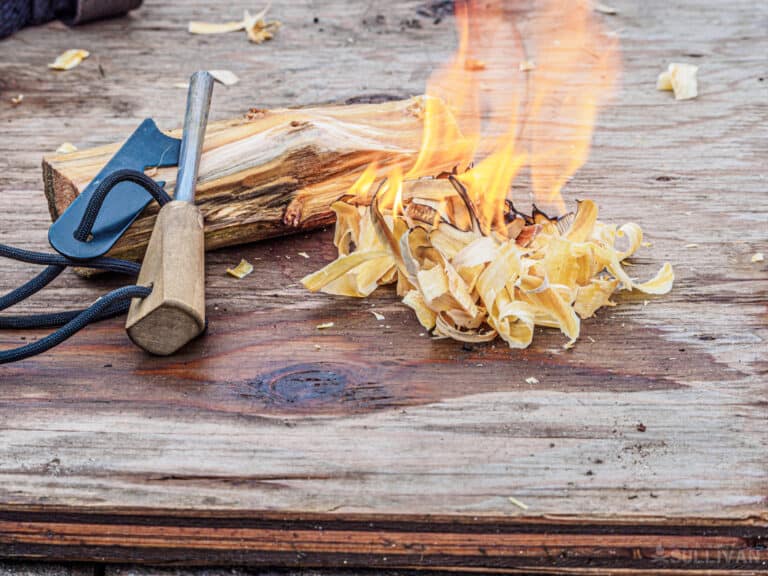Whether it’s that time of year again when the cold weather starts to set in, or you are traveling through an area that is cold pretty much all the time, the risk of exposure is going to be a constant if you cannot get warm.

No matter if you are lost, camping, trekking, bugging in, bugging out or just trying to survive, a top priority is to stay warm. If you don’t, truly nasty things like hypothermia can set in wrecking a well laid plan.
For many people, this is nothing more than an annoyance. But for others, it can be a life-threatening danger.
Exposure is one of the leading causes of death in survival situations, so you’d better take it seriously and know how to get warm no matter the setting.
In this article, we will discuss the hazards of cold weather exposure and how to stay safe when the temperature starts dropping.
Table of Contents
Exposure The Last Thing You Want
One of the most dangerous things about exposure is hypothermia. This occurs when your core body temperature drops below 95 degrees Fahrenheit and as a result your body can no longer function properly.
Symptoms of hypothermia include shivering, confusion, slurred speech, and drowsiness. If not treated quickly, it can lead to cardiac arrest and death.
Hypothermia is a major killer in cold weather survival situations and any other time your body temperature starts dropping, so it’s important to be aware of the signs and how to prevent it. Even the early effects of hypothermia can make any survival situation far, far harder!
So how do you stay safe from exposure? The first defense is to dress appropriately for the conditions. The extremities are especially vulnerable to hypothermia and in the harshest conditions to frostnip and frostbite.
A thorough discussion of layering clothing for optimal cold-weather performance is in the next section.
Using Your Gear to Stay Warm
Dressing for Warmth No Matter the Weather
Now that we know how potentially dangerous exposure can be, let’s talk about how to prevent it. The key is to wear the right clothing. In cold weather, you want to dress in layers.
This will trap heat and protect you from wind and moisture. This is most commonly and efficiently accomplished through a three layer approach.
The layers, from innermost to outermost, consist of the base layer, the mid layer, and the outer layer or shell.
The base layer should be made of a material that wicks away sweat, like wool or synthetic fabric. This layer is essential for managing moisture.
Moisture, as we learned, greatly facilitates heat leaving your body and no matter how gently you are moving around you’re always going to have some perspiration so an effective, technical inner layer is a vital component for staying warm and cold conditions since it will evacuate and evaporate the moisture before it can chill you.
The next layer is the mid layer and should be insulating, like down or fleece. This is the workhorse of your layers, and primarily responsible for trapping a “bubble” of warm air against your body and protecting it from chilling.
The mid-layer should generally be puffy, fluffy and toasty warm, although still capable of being unzipped or unbuttoned so that you can let out excess heat and moisture as appropriate. Also, in the most frigid conditions, you might need a second mid layer depending on your activity.
The final layer is the shell, the outer layer. It should be water resistant and windproof, like Gore-Tex or nylon. This is the shell that will keep moisture and wind from getting in and “stripping” you of heat.
It is generally going to be large and bulky, and should also provide a measure of warmth while being easy to unzip or unbutton in order to let out surplus heat and moisture as activity levels or temperatures change.
If you are outdoors in cold or wet weather, you’ll also want to bring along an extra, totally waterproof outer layer for serious precipitation in case you get rain, snow or sleet.
This could be poncho, anorak or something similar. As I mentioned above, nothing is worse for your core temp than getting wet while in a cold environment.
Beyond your base pants and shirt layers, you’ll need to protect your extremities. Keeping your hands and feet warm is vitally important in the coldest weather.
Gloves or mittens are mandatory, and in extremely cold weather you might need a warm, insulating inner glove and a weather resistant outer glove similar to the system of layers described above.
Comparing gloves to mittens, mittens have an advantage for keeping your fingers warm because they allow each finger to share warmth with its neighbor whereas gloves try to keep each finger warm on its own.
Gloves, however, have the obvious advantage when it comes to dexterity, so if you need to use tools gloves might be your go-to.
Socks are similarly important, and your feet are particularly vulnerable to moisture from sweat so make sure you get the best and warmest moisture wicking socks available and consider using two layers as with gloves.
It should go without saying that any footwear you consider for cold weather use should be absolutely waterproof if possible.
In extreme cold, you may also want to consider face masks, scarves, balaclavas and goggles. If you are in extremely cold weather, your hands, feet, face and other extremities will be the most vulnerable to frostbite, and it is difficult to save them once it takes hold. See the next section for more info.
Frostbite
There are two main types of extreme cold-related injuries that can occur: frostnip and frostbite. Frostnip is the less serious of the two, but it can still cause long-term damage if not treated properly.
It occurs when the skin and underlying tissue starts to freeze, but there is no permanent damage. Symptoms include numbness, tingling, and pale skin.
Frostbite, however, is much more serious, as it involves the freezing of blood vessels. This can lead to tissue death and permanent nerve damage. Symptoms include white or grayish-yellow skin, hard or waxy skin texture, and numbness.
Blackened or purple patches indicate substantial tissue death. If you think someone has frostbite, it is important to seek medical attention immediately as there is a risk of amputation if not treated quickly.
Frostbite is an especially serious and insidious problem because it starts to take hold before you are properly aware of it happening.
Anytime you are cold enough to be at risk of frostbite you’ll probably have lost enough sensation before then that the pain won’t be immediately noticeable, and especially when you are committed to making progress or getting a job done, damage can already pile up before you were able to make a proper inspection.
As mentioned above, it is the extremities that are the most vulnerable to frostbite, and in the coldest conditions it can set in in under an hour.
Your nose, ears, lips, fingers and toes have comparatively low mass and are not particularly vascular compared to the rest of your body, meaning they have an awfully hard time staying warm through body heat alone.
You must make it a point to check your own extremities and to buddy-check others in your group for any sign of frostbite at regular intervals, no matter how good people say they feel.
By dressing properly, you can prevent exposure, hypothermia and frostbite. But what if you find yourself in a survival situation without the right clothing, or the clothing just isn’t enough? There are still things you can do to get warm and stay warm. We’ll talk about plenty of them in the next sections.
Add or Remove Clothing Layers as the Situation Dictates
As you get cold, put layers on, as you get warm the layers can come off… think of it like a thermostat for your body, always adjust so that you can be at your best. It also means think about the fabrics you wear. A premium is on breathable, quick drying and compact.
The goal with the layers is to stay warm, but not sweat. As the layers come off, you want to be sure that they are getting dry before you put them back on.
Why? A simple survival truth is: DAMP = COLD and cold is bad. This means you want clothes that dry quickly, and actually work to get moisture out. Most high end modern fabrics work this way, and it is actually fairly easy to build a good wardrobe on a modest budget if you are careful.
Safety blankets can be a life saver, you know the ones, those tinfoil like squares. In a true emergency they control the heat being lost by your own body and reflect it back into yourself:

Or they can be used to reflect heat sources and direct lost heat back on yourself. Both functions can mean the difference between life and death.
Be sure to have a blanket size that is big enough to cover your whole body, or big enough to set up an effective reflecting wall when needed.
Those same blankets can double as an emergency shelter if setup as an A-frame tent using cording.
This can stop you from feeling the effect of the wind, but also allow lost heat that is rising to be reflected back onto the people under the tent.
So be sure to have the right blanket, and the cord needed to string up a shelter in a pinch.
If you aren’t moving much, or in a very cold environment you may want to use portable heat sources.
These are those little heat packs that can be placed in your gloves, boots, pockets and pretty much anywhere you can get them to stay in one place. They use a chemical reaction to produce heat, keeping your extremities warm.
Another portable heat trick is a heated vest or socks. Running off of batteries these units can keep your core toasty warm while only needing a recharge later to be ready to go again!
Things to Do to Help You Stay Warm
Get Off the Ground
One way to stay warmer when sleeping in nature is by getting out of direct contact with the ground.
It might seem like a foregone conclusion anytime you’re out in the wilderness, but the Earth is basically a giant heat sink, and no matter how toasty you feel in your sleeping bag or clothing, you will lose a lot of heat through direct contact with the ground.
The solution is to put something highly insulating between you and the ground or to get off of the ground entirely while resting. This will help you stay dramatically warmer than you would be otherwise.
This can be done by using a sleeping pad, which is an insulated mat that you place underneath your sleeping bag.
Sleeping pads help to keep your body heat from being conducted away by the cold ground. Another way to get off the ground is to sleep on boughs or other natural materials that insulate well.
If you have a hammock (especially a covered one) or tree tent, you can also rig it up so that you are suspended off the ground, which will further reduce heat loss by conduction.
Finally, make sure to wear warm clothing even when settling down to sleep and buy a good sleeping bag rated for the coldest weather you could possibly experience.
Huddle Up
Huddling with others is a simple way to maximize body heat. Two bodies close together can help to raise your core temperatures, if you are comfortable to get close to one another.
I mean, not everyone wants to let their travel companions (or unknown rescuers/rescuees) deep inside their personal space bubble. In a true life or death situation, it may be the only way to get the blood flowing again.
Keep Moving
Keep moving to stay warm. As long as your body is moving, you are producing heat, when you stop moving you start to cool down. The goal here is to move, but not get sweaty and therefore damp because that equals cold.
Also, you do not want to move to the point of fatigue. Keeping a steady pace, easy to maintain, and if needed minimal stopping until a safe warm place can be found.
If you are moving and must rest you will need a warm, dry place. Under a tree is dry if no other shelter is available.
This is best under evergreens, they typically are drier under their branches at the base of the trunk, but that is not a great place to start a fire.
You will have to trust in the branches being thick enough to trap air, so have some sort of heat source that will not burn the tree down with you under it.
Improvised Insulation
Something you can do is use dry leaves as insulation. They can be stuffed inside clothes which will let you use air pockets to your advantage.
Remember they trap body heat and work to your advantage in staying warm. Leaves can also be piled up between you and ground for insulation.

Just make a big pile, and I mean big! The more leaves, the warmer your “floor” will be. Also stuff leaves in the void spaces around you, and even pile over you if necessary. The more you can get covered the better.
In the day time hours, you can also find a thermal face (dirt, rock, wood) and sit with your back to it. Then face the sun and absorb as much heat as possible while resting and refueling your body for the next task.
Get Out of the Wind
Staying out of the wind is also something that you need to be aware of at all times. If you are stopped, you need some type of structure to block the wind.
When picking your clothing and gear, be sure to think about shielding yourself from the wind as well as staying warm.
Get warm before getting under the blanket/sleeping bag/insulation, if you are chilled to the bone and climb into your cover without warming up it will be ineffective.
You need to have some heat for the layers and zones to trap the heat! Be sure to warm up via movement or a heat source before insulation happens.
Eat
Eat late; our bodies create heat as they metabolize food. So use that to your advantage.
Fatty foods are better for this as they are metabolized at a slower and more even pace compared to carbohydrates, meaning your body will be warmer longer on fatty foods.
Always carry with you a simple metal cup. This way you can melt snow over a fire, or boil water to make a body warming drink.
If you are not going to carry tea or coffee with you, know what you can make flavored drinks out of in your area. This is important as you can get some helpful nutrients, but also to avoid potentially ingesting toxic plant.
Try the Hot Water Bottle Trick
The hot water bottle method is simple: all you need is a water bottle capable of holding it at a high temperature, and some, well, hot water!
Fill the bottle with steaming (not boiling!) water, screw on the top, and then snuggle against it in your sleeping bag before going to bed. Alternately, place it directly against “hot spots” on your body: under the arms, chest, groin, etc.
The heat radiating from the bottle water will help warm you up, and is a great method for quickly and easily warming up someone who is a bit too chilled.
If you find yourself needing to warm up in the wilderness, give the hot water bottle method a try. In fact, I’ve used this method myself when camping in the Dakotas during the winter months.

10 Fire Tips to Help You Stay Warm
Assuming you can get a fire going and you have a fuel source, you will want to use large rocks as a fire ring. As the fire burns it will heat the rocks and they will provide thermal heat even as the fire dies down.
Old timers even tell stories of taking the warm rock and hugging them as they sleep to stay warm, rotating they out for warm ones as the y cool off.
Another trick around a fire is using reflectors to your heating advantage. Place a reflector wall behind you and another in front of you but on the opposite side of the fire.
The heat will reflect between both reflective walls and keep you toasty warm. You can make these walls out of rocks, dirt, logs or even the reflective blankets we talked about earlier. Just be sure the walls are on the outside with you and the fire on the inside!
The simple Teepee fire is one most people know. Standing pieces of wood on end and leaning together, place the kindling under the structure. Once lit the fire will burn from the inside out and allow you to add more wood to grow the fire very easily.
A Swedish Torch fire is great for cooking without a stove, or fires in a tight space. Find a block of wood with flat ends, and cut a large deep X in one end.
Light a fire where the lines cross, as the fire burns it will travel deep into the cuts you made. This causes the fire to be forced up and out of the log much like a torch. Great for boiling water or cooking meat.
The oil and water drip is a more complicated fire, but one that works really well. In two separate containers put oil and water.
If you can control the dripping try to get three drips of water to even one drip of oil. This should be dripping down onto a controlled area, think rock with a compression.
This is to help the fluids to mix, and to control the burn of yourself made oil fire. It will burn hot, but it is harder to master, you might want to practice this one before heading out.
Keyhole fires are named for the shallow keyhole shape and line with rocks that is dug before lighting the fire. Then either light a fire in the round end or in the slot end. This gives you the option of dragging coals into the end the fire is not in for cooking over.
Every cowboy movie seems to have a star fire in it. This is the simple setup of laying the wood out in a star pattern. You then light the point where the ends touch, as they burn push them into the center to keep the fire going.
The criss-cross or log cabin fires are really quite similar, you lay the logs down one way and then on the next level lay them down the opposite way.
Repeat this for a couple layers and then light the middle kindling on fire. As the fire burns it will create a decent mass of coals that will allow the fire to be very easy to keep going.
Final setup is a platform fire. You will need to find a large flat rock or metal sheet, and then build the fire type of your choice on top of the structure. This will create thermal heat from the platform that will spread heat evenly and for a longer period of time into your campsite.
It goes without saying, but I will say it anyway, you must have a reliable way to light fires. Matches, waterproof or not, flint, magnesium sticks, BIC lighters, and all of the other choices are great. Problem is we often forget them, or they do not work in the moment that we are depending on them.
This is why it is most important to have an old school back up plan, lighting a friction fire. No matter if you use the twist, bow or groove methods be sure that you can actually get a fire going if you have to.
Watching it on TV or reading about it is not the same as actually going outside and working at a basic skill that one day might save your life!
Keeping Warm Is More Important than Food and Water
I will be the first to say that this list is nowhere near complete. It seems that there are as many ways to keep warm as there are people that are keeping warm.
I have always been one who wants to learn, so that I can have an ever expanding bag of tricks so to speak. The best way to learn, I have found, is to share what you know so then the skills and traditions for survival and bushcraft live on in others.
That being said, what are your tips for staying warm? What items from the list are you going to try out? What do you already do?

My dad was military. My grandfather was a cop. They served their country well. But I don’t like taking orders. I’m taking matters into my own hands so I’m not just preparing, I’m going to a friggin’ war to provide you the best of the best survival and preparedness content out there.

Hi, I always love your articles and wanted to add to this. In the UK when cycling I put a layer of news paper under my jacket in cold weather. Once I reach a warm enough temperature it can be discarded. Repeat for the trip home. Peace.
a Dakota stove is a good choice. We have covered it with sheet metal we found from an old camp. leaving a space for air to get through the fire bed to the chimney. If made larger a pillar could be placed in the middle, if large flat rocks can be found to place over part of the fire pit it will make a good heat radiator. place this closer to your shelter for warmth. If a tin sheet can be found roll it up and place it in the flue hole in the ground to help the stove draw better. Fire is good for heat and cooking.
such a sassy post !! i love keeping warm ! stay sessy you guys peace out